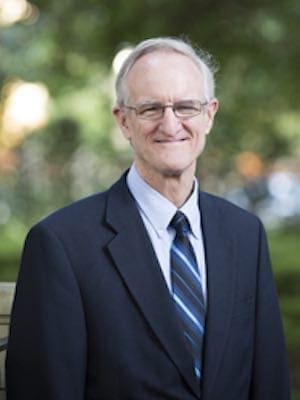Most Baptists concerned with social justice have heard of Clarence Jordan and Koinonia Farm. Powerful anecdotes abound about the author of the Cotton Patch Gospels.
On one occasion, Jordan spoke to a Southern congregation about racism, and an elderly woman retorted, “I want you to know that my grandfather fought in the Civil War, and I’ll never believe a word you say.”
“Ma’am, your choice seems quite clear,” Jordan replied. “It is whether you will follow your granddaddy or Jesus Christ.”
This clear call to discipleship led Clarence and Florence Jordan and Mabel and Martin England to form a Christian commune in 1942, eight miles from Americus, Ga.
Clarence Jordan, a native Georgian, held a doctorate from Southern Baptist Theological Seminary and had served as an inner-city missionary (with Henlee Barnette) in Louisville, Ky. The Englands had served a term as American Baptist missionaries in Burma.
The name and spirit of Koinonia Farm were drawn from Acts 2:44-45 and 4:32-35. Members of the Christian community combined their resources and shared all things. Core principles included pacifism/nonviolence, racial reconciliation and simple living, all derived from the teachings of Jesus.
They intended to be a “demonstration plot” of the Kingdom of God. Kingdom outreach meant teaching advanced methods to local farmers to help them defeat poverty.
Residents at Koinonia Farm met immediate and persistent resistance from local whites. The key issue was race. Members of the Ku Klux Klan warned Jordan and England about racial interaction at the farm.
In 1950, Rehobeth Baptist Church, located nearby, excommunicated Koinonia residents from the church because of racial openness at the farm. In 1956, after Jordan supported the rights of two blacks to attend public universities, Koinonia Farm and its residents were the targets of violence, vandalism, tax investigations and economic boycotts in the local community.
The number of people who lived at Koinonia Farm was never large. At its numerical peak in 1956, Koinonians totaled about 60. Twenty-five percent were African-Americans; about 50 percent were children.
But oppressive violence drove many away, making the Jordans and Will and Margaret Wittkamper (who had arrived in 1953) the only residents in 1968 (the Englands had returned to missionary service in Burma before World War II concluded).
Koinonia Farm turned a corner in 1968 when Millard and Linda Fuller arrived. In previous years, residents had farmed and then developed a pecan/fruitcake mail-order business to survive amid local hostilities.
But Fuller and Jordan together planned to build low-cost houses and offer them to the needy through 20-year, no-interest loans. A Fund for Humanity was created to collect pledges, and Koinonia Farm became Koinonia Partners.
Though Jordan died later that year, the housing ministry, “Partnership Housing,” gave renewed purpose to Koinonia, and by 1979 the commune had 36 adult members (resident partners).
From 1969 to 1992, 194 houses were built. The legacy of the ministry is Habitat for Humanity International, the renowned housing ministry started by the Fullers after they left Koinonia in the mid-1970s. In view of Fuller’s work, Koinonia shifted its emphasis to the “rehabilitation” of existing houses.
Koinonia sparked two other ministries. In 1979, three families left Koinonia to develop a ministry to refugee immigrants, especially those from Central America; that became Jubilee Partners, established in the north Georgia community of Comer. Then in 1989, two former Koinonia resident partners created the New Hope House in Griffin, Ga., to minister to prisoners and their families.
Koinonia Farm still offers a communal lifestyle of discipleship. While the number of permanent residents is small, short- and long-term volunteers are frequent guests. They form a “working community” that farms, sells pecans and peanuts, renovates houses, and reaches out to the local area with a Child Development Center and adult education opportunities.
Koinonia residents are committed to radical discipleship and the original purposes of the Jordans and Englands: nonviolence, reconciliation of all peoples and empowerment of the poor.
“We’ll worship the hind legs off Jesus,” Jordan warned, “but never do a thing he says.”
Doug Weaver is professor of Christianity and chair of the religion and philosophy division at Brewton-Parker College in Mt. Vernon, Ga.
For further reading:
www.koinoniapartners.org
Interracialism and Christian Community in the Postwar South: The Story of Koinonia Farm by Tracy Elaine K’Meyer.
Andrew Chancey’s “Koinonia in the ’90s” in Christian Century (Oct. 14, 1992)

